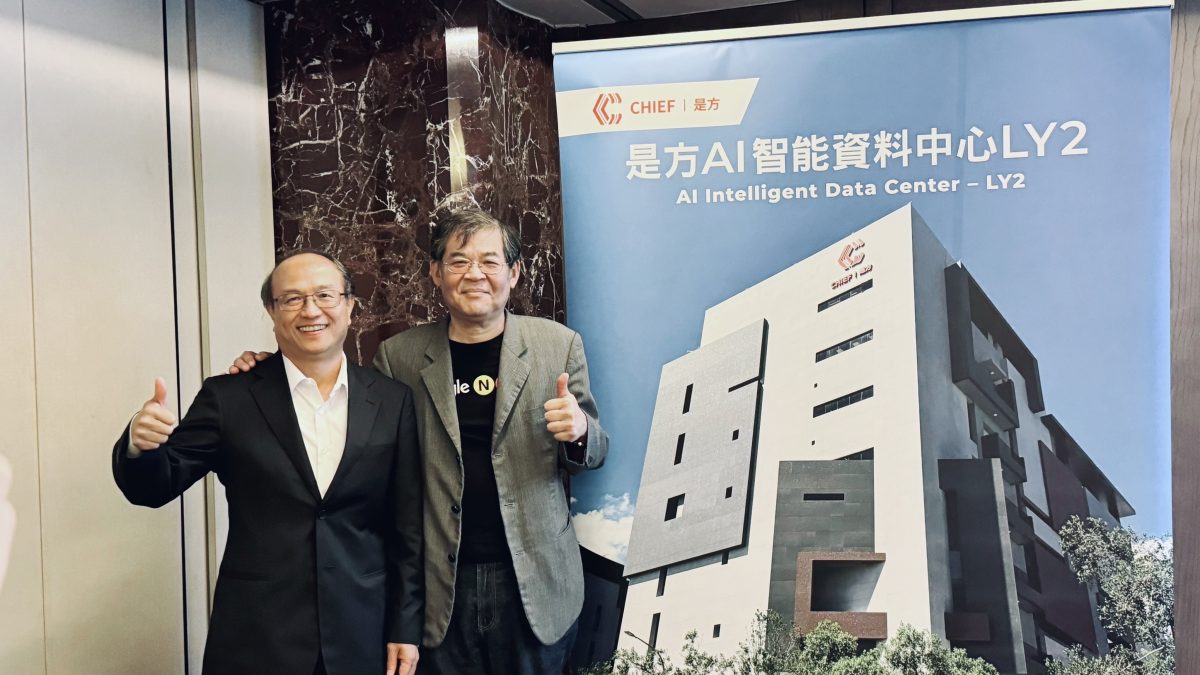In an era of artificial intelligence and big data, typical data center facilities no longer meet market demands. Mr. Joseph Wu, Chairman of Chief Telecom, commented on the current state of data centers across Taiwan, stating that today’s AI servers are becoming increasingly “precious.” To meet the stringent requirements of these advanced AI servers, next-generation data centers need to undergo comprehensive upgrades in several key areas: power capacity, floor loading capacity, seismic resistance capacity, and cooling systems that incorporate both liquid cooling and air cooling technologies. He emphasized that Chief Telecom’s LY2 AI data center not only meets these advanced criteria but also has extensive global network connectivity, making it a strategically valuable AI data center in Taiwan.
Mr. Johnny Liu, President of Chief Telecom, pointed out that with the rapid development of generative AI, data centers and the infrastructures must be redesigned. Among the new challenges, the most critical are power, cooling, and load-bearing requirements. Traditional data centers, with rack power of 4 to 6 kW and floor load-bearing capacity up to 1000 kg, were sufficient. However, with the continuous upgrade of AI servers, power density per rack now has to meet at least 10 kW, and some specific GPU server racks may even require 200 kW to be up to standard. Additionally, a single AI server rack can weigh between 1500 kg to 2000 kg, meaning that the floor loading capacity of a data center must be designed to support better loading-bearing capacity and require more robust seismic isolation systems and dampers to withstand potential earthquake hazards.
“The traditional renovation of old buildings can no longer meet current needs. While IDC operators are facing significant challenges, these changing demands also create new operational niches and barriers to entry.”
According to industry analysts, NVIDIA’s latest GB200 NVL72 AI server cabinet costs around US$3 million to US$4 million per AI server while traditional servers cost only a few tens of thousands of dollars, highlighting the need for additional protection for these expensive new servers. Moreover, the new generation of AI servers is not only becoming more “expensive” but also increasingly “heavier.”
Mr. Johnny Liu mentioned that the most urgent need for now is a new generation of intelligent data centers that align with AI computing architectures. Chief’s LY2 IDC is a building with an area of 5,000 ping (approximately 16,500 square meters), seven stories above the ground and two floors underground. It is able to accommodate 1,800 server racks, with the overall design meeting the power, cooling, and load-bearing requirements of AI servers. The power density per cabinet will be ranging from 10 kW to 200 kW. The floor of LY2 building is 6 meters in height, allowing for advanced liquid-cooling and air-cooling designs. The floor loading can take up to 2,000 kilograms per square meter; it will also be able to withstand earthquakes of Richter scale 7. Additionally, the LY2 building incorporates the elements of smart building and green building, making it the best model of high-intelligence data center in Taiwan.
To meet customers’ demands for high-speed bandwidth, Chief Telecom had proceeded with International Submarine Cable Leased-Circuit Business application and received NCC approval in May 2024. Chief is actively expanding international bandwidth, and the global internet backbones currently have scaled to over 1200G. The service coverage expands more than 60 cities spanning 40 countries around the globe. Additionally, Chief’s Three Rings and Three Lines aims to connect Taiwan’s western tech corridor through a nationwide fiber optic network, linking the major science parks in Taipei, Taoyuan, Hsinchu, Taichung, Tainan, and Kaohsiung, which allows corporate clients to reach Chief’s data centers with the shortest distance, fastest speed, and lowest cost. This also enables clients to enjoy fast and convenient services of telecommunication, internet, cloud-based applications, and AI computing, further promoting Chief Telecom as the digital convergence hub of East Asia.




